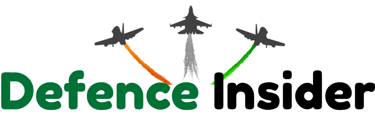Indian Airforce
"Nabhah Spriśam Dīptam" (नभः स्पृशं दीप्तम्)
The Indian Air Force: Guardians of the Skies
The Indian Air Force (IAF), the aerial branch of the Indian Armed Forces, plays a vital role in safeguarding the country's airspace and conducting both peacetime and wartime operations. Established on 8th October 1932, the IAF has evolved from a small auxiliary air wing under the British Empire into one of the world’s most formidable air forces, ranked among the top five globally in terms of aircraft strength and operational capabilities.
History and Evolution
The IAF began its journey with just four Westland Wapiti biplanes and six Royal Air Force-trained officers. During World War II, the IAF supported British forces and earned distinction for its combat effectiveness. After India gained independence in 1947, the IAF became an independent body and has since participated in major conflicts including the Indo-Pak wars of 1947, 1965, and 1971, the Kargil conflict of 1999, and various counter-insurgency and humanitarian relief missions.
Organizational Structure
The IAF operates under the Ministry of Defence, headed by the Chief of the Air Staff (CAS), a four-star Air Chief Marshal. The operational structure is divided into five operational and two functional commands:
Western Air Command (WAC) – New Delhi
Eastern Air Command (EAC) – Shillong
Southern Air Command (SAC) – Thiruvananthapuram
Central Air Command (CAC) – Prayagraj
South Western Air Command (SWAC) – Gandhinagar
Training Command – Bengaluru
Maintenance Command – Nagpur
Each command is responsible for different geographical zones and operational tasks across the nation.
Aircraft and Equipment
The Indian Air Force operates a powerful and diverse fleet, including:
Fighter aircraft: Su-30MKI, Rafale, Mirage 2000, MiG-29, Tejas LCA
Transport aircraft: C-17 Globemaster III, C-130J Super Hercules, An-32
Helicopters: Apache AH-64E, Chinook CH-47, HAL Dhruv, Mi-17
Drones and UAVs: Heron, Searcher, and indigenous Rustom drones
The IAF is continuously modernizing its arsenal with the induction of new systems such as the S-400 air defence system, Tejas Mk2, and AMCA (Advanced Medium Combat Aircraft).
Strategic Roles and Responsibilities
The primary mission of the IAF is to secure Indian airspace and conduct aerial warfare during conflicts. However, its roles go far beyond:
Air superiority: Ensuring control over airspace during war
Strategic bombing: Disrupting enemy supply and command centers
Airborne surveillance and reconnaissance
Airlift and logistics: Transport of troops, equipment, and humanitarian aid
Disaster relief operations: Conducting rescue missions during floods, earthquakes, and other emergencies
The IAF also plays a critical role in nuclear deterrence, being a vital part of India’s nuclear triad.
Training and Personnel
The IAF is known for its rigorous training protocols. Officers are trained at institutions like:
National Defence Academy (NDA)
Air Force Academy (AFA), Dundigal
Air Force Technical College (AFTC)
Flying Instructors School (FIS)
Ground staff, engineers, and technicians undergo specialized training to maintain operational readiness at all times. The IAF’s Garud Commando Force is a specialized unit trained for counter-terrorism, hostage rescue, and high-altitude operations.
Women in the IAF
The Indian Air Force has been a pioneer in integrating women into combat roles. It became the first branch of the Indian Armed Forces to induct female fighter pilots in 2016. Women now serve across several streams including flying, technical, logistics, and administration.
Modernization and Future Plans
The IAF is undergoing a comprehensive transformation under initiatives like ‘Make in India’ and Atmanirbhar Bharat (Self-Reliant India). Projects like:
Indigenous Tejas Mk2
Futuristic UAVs
Next-gen air defence systems
Fifth-generation fighter jets (AMCA)
These will enhance India’s aerospace capabilities and reduce reliance on foreign imports.
Global Engagements
The Indian Air Force regularly engages in joint exercises with major air forces such as:
Exercise Garuda (with France)
Exercise Red Flag (with the U.S.)
Exercise Indradhanush (with the UK)
Exercise Cope India (with Japan and the U.S.)
These collaborations improve interoperability, strategic ties, and exposure to global tactics.
Conclusion
The Indian Air Force stands as a symbol of strength, resilience, and unmatched professionalism. With a legacy built on courage and innovation, it continues to soar into the future, defending the skies with honor and unwavering commitment. As technology and threats evolve, the IAF’s focus on modernization and indigenization ensures that it remains ready for any challenge, in peace and in war.


